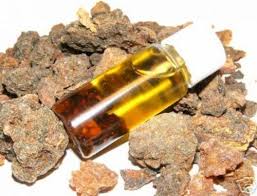










Nonselective Binding to Proteins: The Science of Advanced Aromatherapy
The disturbance of a protein's three-dimensional structure, or its confirmation, appears to be a major strategy of plants when selecting molecules for defence. In the course of evolution plants have learned, by means of their secondary metabolites, to impair or alter the proper functioning of proteins in the target organism by disturbing their conformation. In the case of an enzyme this will, subtly or strongly, change the activity of the enzyme.
Secondary metabolites that disturb protein conformation generally act non-selectively: they interact with structural features found in all or almost all proteins. Two main strategies are followed to modify protein conformation.
One is to form covalent chemical bonds (bonds between two atoms mediated by a pair of electrons) with particular structural elements of proteins (such as NH, terminals or SH groups).
The other is by so-called weak interactions (such as when lipophilic terpene molecules insert themselves into the lipophilic segments of a protein and thereby changing conformation).These strategies affect all proteins that present the requisite molecular targets, regardless of their specific function.
Certain plant molecules have structural elements that readily undergo covalent binding to proteins ( such a at the aforementioned NH2 or SH sites). As the overall chemical structure of the protein changes through the addition (binding) of the additional molecule., so does its conformation.
Essential oil molecules that can react in this way and significantly distort protein conformation by nonselective binding are, for instance , terpene aldehydes as found in Melissa or Lemongrass.
Protein conformation can also be modified when terpenes of an essential oil interact with the lipophilic areas of the protein.
The small lipophilic terpenes can insert themselves into lipophilic area of a protein and thereby change its conformation. Such interactions are called weak interactions because no actual chemical bonds are formed.
Reference: The Healing Intelligence of Essential Oils: Kurt Schnaubel
Articles Latest
- CARDAMON
- CARAWAY
- CANANGA
- CAMPHOR
- CALAMUS
- Calamintha-Calamintha officinalis
- CAJEPUT- Melaleuca cajeputi
- Plant Expression
- Molecular Target: Cell Membrane
- CADE Essential Oil
- CABREUVA
- The Kashmiri rose oil worth millions
- Agarwood: The natural treasure worth more than gold whose heady scent is driving it towards extinction
- Nonselective Binding to Proteins: The Science of Advanced Aromatherapy
- Molecular Target: DNA, RNA, and Gene Expression
- BUCHU - Agothosma betulina
- BROOM - SPANISH - spartium junceum
- BORONiA - Boronia megastigma
- BORNEOL - Dryobalanops aromantica
- Boldo Leaf - Peumus boldus
- Birch White-Betula Alba
Articles-Most Read
- Home
- Balsam Canadian - Abies balsamea
- Copaiba Essential Oil
- Balsam Peru
- Basil French - Ocimum basilicum
- North America: Tea Tree and Monarda-3
- Basil Exotic
- North America: Tea Tree and Monarda-2
- Exploring Transcultural Constants
- Thyme Essential Oil
- Balsam Tolu
- Palma Rosa
- The Bioactivity of Essential Oils
- Benzoin - Styrax benzoin
- Why Pharmacology Cannot Demonstrate Essential Oil Efficacy
- Bay - West Indian - Pimenta racemosa
- Exploring Essential Oil Activity The Conventional Way
- Aromatherapy: An Answer
- Complex information From Plants
- Contacts
